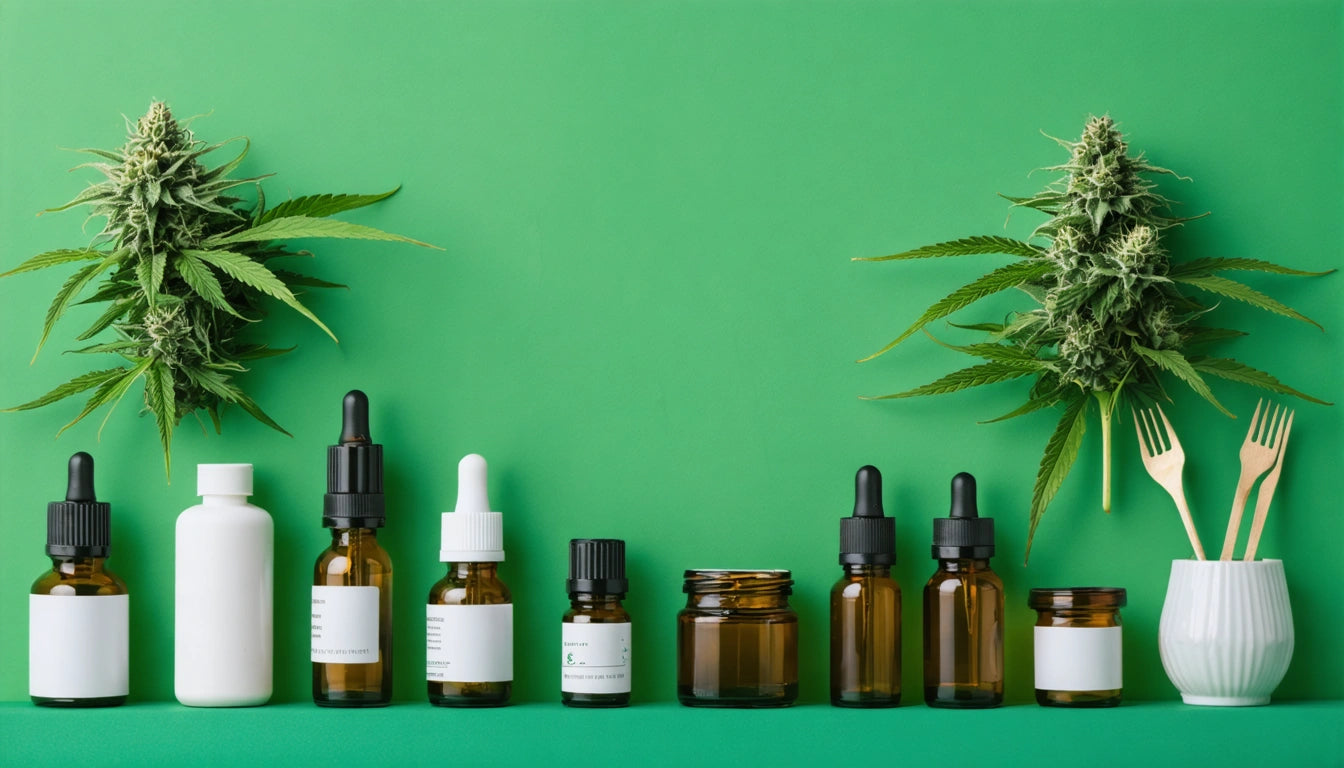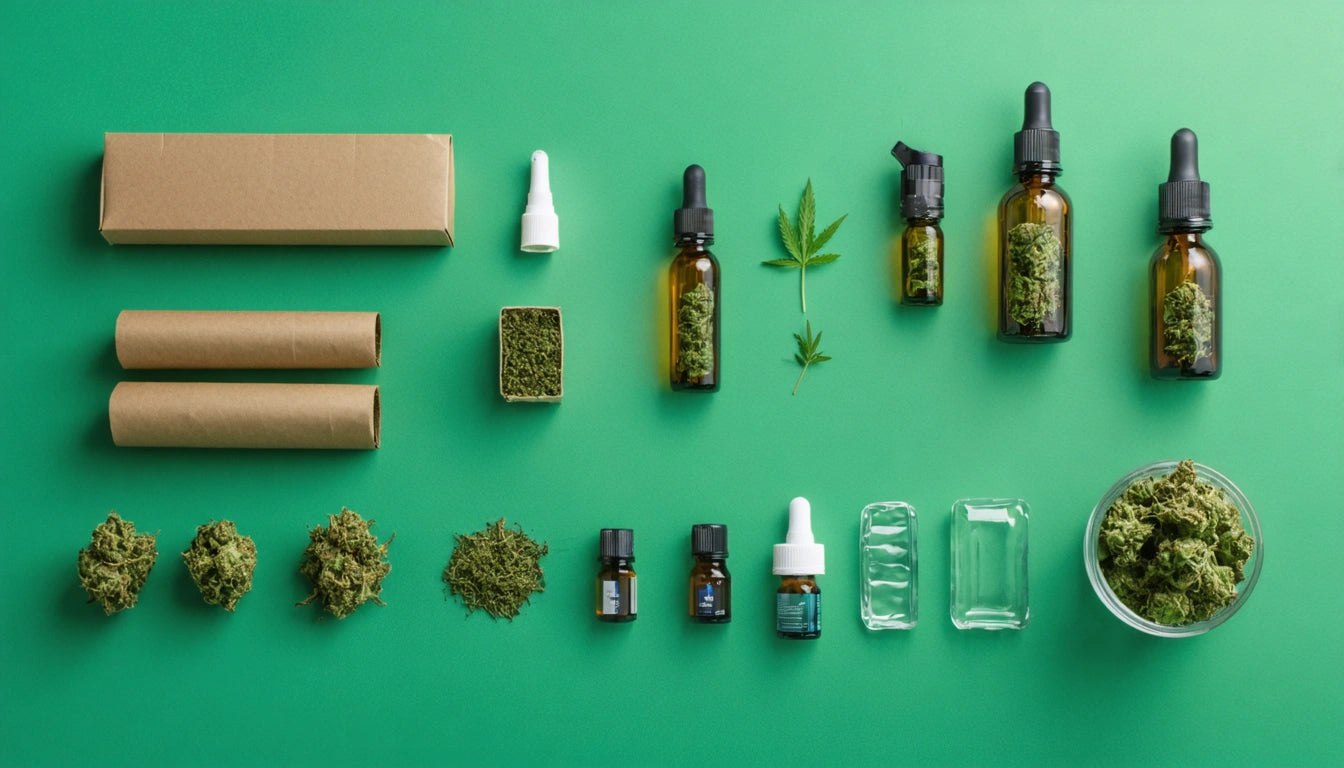Table of Contents
Creating effective cannabis labels requires a delicate balance between regulatory compliance and compelling design. The right label not only keeps your products legal but also attracts consumers and builds brand recognition. This guide explores how to develop labels that satisfy both requirements while standing out in an increasingly competitive market.
Balancing Compliance and Branding on Cannabis Labels
Cannabis labels must serve dual purposes: meeting strict regulatory standards while effectively marketing your product. According to industry data, brands that successfully integrate compliance elements into their design aesthetic see higher consumer recall and trust. The challenge lies in maintaining brand identity while accommodating mandatory warnings, symbols, and information.
A comprehensive approach to label design starts with understanding both state requirements and consumer psychology. Effective labels typically feature clear hierarchy, with compliance information properly placed without overwhelming brand elements.
Legal Requirements for Cannabis Labels
State-Specific Regulations
Cannabis labeling requirements vary significantly by state, with differences in warning language, symbol requirements, and information placement. Before designing, consult state-specific labeling guidelines to ensure compliance. Some states require specific font sizes, warning symbols, or particular placement of certain elements.
Essential Compliance Elements
Regardless of location, cannabis labels generally must include:
- Product identity and net weight/volume
- Cannabinoid content (THC/CBD percentages)
- Batch numbers and harvest dates
- Warning statements and symbols
- Manufacturer information
- Required testing information
Tracking information like batch numbers and expiration dates is not just regulatory but also supports product safety and recall management if needed.
Design Elements That Drive Sales
While compliance is mandatory, design elements drive consumer interest. Research shows that shoppers make purchasing decisions within seconds of seeing a product. Your label's visual impact is therefore crucial to success.
Color Psychology and Brand Recognition
Color choices significantly impact consumer perception. Green often signifies natural or organic products, while black and gold convey premium quality. Consistent color schemes across product lines improve brand recognition, which becomes increasingly important as consumers encounter more options.
Typography and Readability
Font selection balances brand personality with legibility. Regulatory text must remain readable even at small sizes. Many successful brands use a combination of distinctive display fonts for brand elements and clean sans-serif fonts for compliance information.
When processing cannabis material for packaging, efficient equipment like commercial-grade grinding machines ensures consistent product quality, which should be reflected in your packaging and labeling strategy for authentic brand representation.
Material Considerations for Cannabis Labels
Label materials affect both appearance and functionality. Consider these factors when selecting materials:
Environmental Resistance
Cannabis products face various environmental challenges including moisture, temperature changes, and handling. Waterproof and smudge-resistant labels maintain integrity throughout the product lifecycle. UV-resistant options prevent fading in retail environments with bright lighting.
Sustainability Options
Eco-conscious consumers increasingly prefer brands with sustainable packaging. Sustainable label materials such as hemp-based papers, biodegradable films, and water-soluble adhesives appeal to environmentally aware customers while supporting brand values.
Technical Aspects of Cannabis Label Production
Printing Methods and Quality
Different printing technologies offer various benefits for cannabis labels. Digital versus flexographic printing presents tradeoffs between cost, quality, and flexibility. Digital printing excels for small batches with variable data, while flexographic printing may be more economical for large runs.
Special Effects and Premium Finishes
For brands targeting premium segments, special finishing techniques like foil stamping, embossing, and holographic effects create tactile and visual differentiation. These elements can justify higher price points and enhance shelf presence.
Adhesive Selection
Choosing appropriate adhesives ensures labels remain attached to various container materials including glass, plastic, and mylar. Temperature conditions during application and storage affect adhesive performance, making this technical consideration crucial for maintaining compliance throughout the product lifecycle.
Strategic Planning for Long-Term Label Success
Forward-thinking label design considers both current requirements and potential future changes. As the cannabis industry evolves, regulations continue to develop, potentially requiring label modifications.
Future-Proofing Your Design
Future-proofing strategies include leaving space for additional information, using modular design approaches, and working with flexible printing partners who can accommodate quick changes. Brands that anticipate regulatory shifts minimize costly redesigns and production delays.
Measuring Label Effectiveness
The ultimate measure of label success is its impact on sales. Track metrics like product turnover rates, consumer feedback, and A/B testing results to refine your approach. Labels that effectively combine compliance with compelling design drive both initial purchases and repeat business, creating sustainable growth for cannabis brands.











Leave a comment
All comments are moderated before being published.
This site is protected by hCaptcha and the hCaptcha Privacy Policy and Terms of Service apply.